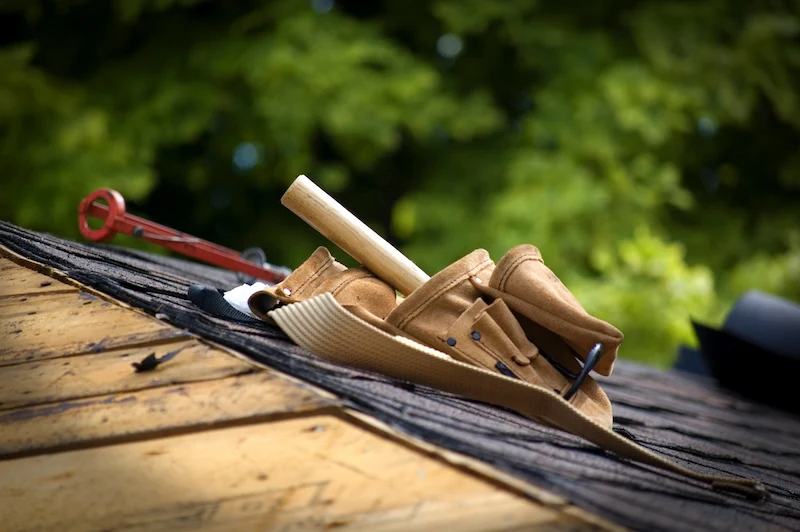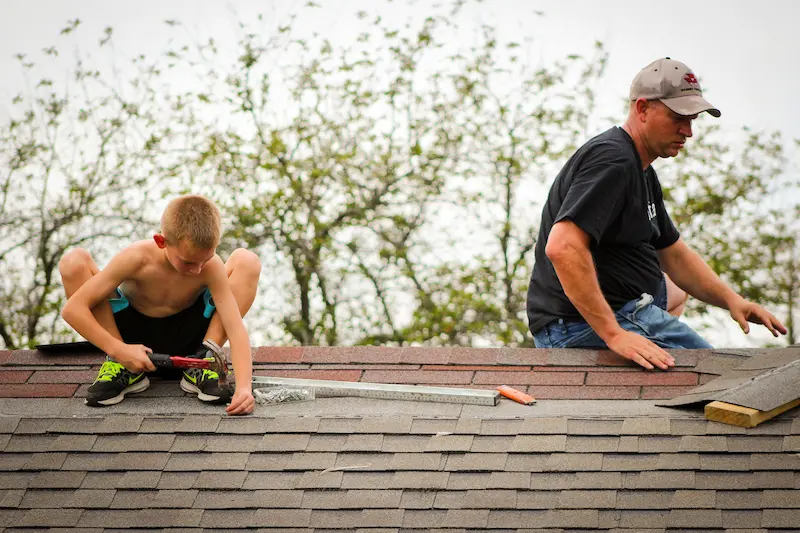Table of Contents
Repairing a roof can evoke a mix of fear and adventure. As a homeowner, it’s tempting to roll up your sleeves and tackle this critical task yourself. However, the risk of falls, property damage, or ineffective repairs looms large for the inexperienced. Knowing when to take matters into your own hands and when to consult professionals is essential for safety as well as the longevity of your roof. Understanding the scope of your skills, the situation at hand, and the potential risks involved will guide you in making a wise decision.
Understanding the Risks of DIY Roof Repairs
Roof repairs can pose significant safety hazards, especially for inexperienced individuals. Working at heights increases the risk of falls, which are one of the leading causes of injuries at home. According to the National Safety Council, falls accounted for more than 300,000 injuries in the U.S. in recent years, many of which stem from ladder or roof-related accidents. Moreover, an improperly repaired roof can lead to more extensive damage, resulting in higher costs in the long run.
In particular, you should evaluate your physical capabilities, the complexity of the task, and environmental factors, such as weather conditions. If you need experience handling tools or climbing to high places, then it may be wisest to consult a professional. Many local contractors provide educational resources and customer support; for more information, you can go now to discover your go-to roofing company. Knowing your limits is key, as an injury not only affects you but also can create further complications for your home.
Common Roof Issues Suitable for DIY Repairs
While some roof repairs require professional expertise, others can be safely managed by homeowners. Basic maintenance tasks, such as cleaning gutters or replacing a few shingles, typically fall within the realm of DIY capabilities. For minor issues like the following, many homeowners could confidently take on the task:
- Replacing a few missing shingles—if you have replacement shingles on hand.
- Sealing minor leaks—using a roof sealant can often fix small leaks.
- Cleaning moss, algae, and debris—keeping your roof free of buildup can extend its lifespan.
As you consider DIY options, it’s essential to know your roof’s specific materials and any warranties that may be involved. For instance, if you own a metal roof, certain repairs might void warranty coverage if not handled appropriately.
Know the Right Tools for the Job

Having the right tools can significantly improve the success of your roof repair project. Basic roofing tools include a ladder, safety harness, roofing nails, and sealants. For more complex jobs, additional tools, such as a roofing nail gun or trowels for applying sealant, may be necessary. A strong understanding of how to use these tools is critical to avoid accidents.
However, if you encounter any specialized tasks—like installing flashing or working on roofing that require more than a standard toolkit—it may be time to call in professionals. Having an extensive toolkit without the knowledge to utilize it correctly can result in time-consuming mistakes.
When to Call the Professionals
Certain scenarios clearly warrant the involvement of roofing experts. If there’s extensive damage—such as multiple missing shingles, sagging areas, or structural damage—professionals will be better equipped to handle the situation. In addition, if you feel unsure about your ability to assess the damage, seeking professional evaluation accurately can save you time and potential hazards. When your roof exhibits signs of wear and tear related to age, like leaks or soft spots, it often requires more extensive repair than you might manage safely.
Moreover, if you are considering large projects such as complete roof replacements or installations, it’s typically best to hire a skilled roofing company. While they might mean parting with a bit more cash initially, their expertise can prevent future problems and additional expenses. Working with a **go-to roofing company** ensures you get the best materials and craftsmanship while keeping your home secured.
Assessing Your Skills and Comfort Level
Consider your experience level and past DIY projects. Familiarity with home improvement tasks can indicate that you might handle minor repairs with ease. However, if tasks like changing light bulbs challenge you, roofing work might be a stretch.
Your comfort level also plays a significant role. Working on a roof can be intimidating and requires a degree of confidence. If you’re uncertain about your safety on ladders or if you’re unable to focus completely on the work due to anxiety or distractions, it’s better to err on the side of caution and hire a professional.
Engaging in DIY roof repairs can be a rewarding endeavor, but it requires careful consideration of your skill set, the complexities of the task, and the potential risks involved. Simple repairs like minor leaks and basic maintenance are usually manageable for most homeowners, while qualified professionals best handle extensive issues. By evaluating each situation critically, you can make informed decisions that ensure your roof and your family’s safety.
Want to explore something different? The Top Benefits of Using Technology to Grow Your Church Community

